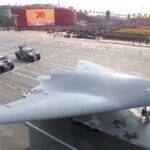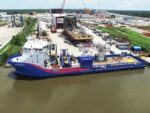Firefly Aerospace has announced the acquisition of SciTec Inc. for $855 million in a major expansion of its defense and intelligence capabilities. The deal positions Firefly as a vertically integrated space and defense contractor with growing relevance in national security domains such as ISR (Intelligence, Surveillance & Reconnaissance), EO/IR sensing, and responsive launch services.
Strategic Rationale Behind the Acquisition
The acquisition of SciTec marks Firefly’s most significant move yet to diversify beyond launch services into upstream payload development and downstream data exploitation. Founded in 2006, SciTec specializes in advanced sensor systems for missile warning, space domain awareness (SDA), and geospatial intelligence (GEOINT), primarily serving U.S. Department of Defense (DoD) customers including the U.S. Space Force and Missile Defense Agency.
By integrating SciTec’s software-defined sensor payloads with Firefly’s responsive Alpha rocket platform and Blue Ghost lunar lander program, the combined entity aims to offer end-to-end mission solutions—from satellite manufacturing to launch to on-orbit sensing—for time-sensitive national security missions.
“This acquisition accelerates our strategy to become a full-spectrum space solutions provider,” said Bill Weber, CEO of Firefly Aerospace. “SciTec brings deep expertise in mission-critical sensors that complement our rapid launch capability.” The merger also reflects growing demand from U.S. defense agencies for vertically integrated providers capable of delivering both hardware platforms and actionable data streams.
SciTec’s Core Competencies in National Security Sensing
SciTec is best known for its work on missile warning systems using multispectral infrared sensors—technologies that underpin early warning satellites such as SBIRS (Space-Based Infrared System) and future programs like Next-Gen OPIR (Overhead Persistent Infrared). The company has also developed real-time threat detection software using machine learning algorithms tailored for edge processing aboard satellites or high-altitude platforms.
- Missile Warning & Tracking: Algorithms for real-time discrimination of ballistic vs hypersonic threats
- Space Domain Awareness: Optical tracking systems to monitor objects in LEO/GEO orbits
- GEOINT & EO/IR: Multispectral imaging tools for terrestrial surveillance from orbit
- C4ISR Integration: Sensor fusion modules compatible with DoD battle networks
SciTec operates across multiple classified programs within the U.S. intelligence community and has received over $300 million in prime contracts since 2020 alone. Its headquarters are based in Princeton, New Jersey with additional facilities near key government hubs including Colorado Springs and El Segundo.
Implications for Firefly’s Positioning in the National Security Market
The acquisition significantly enhances Firefly’s value proposition to U.S. government customers seeking rapid deployment of ISR assets under tight timelines—a priority emphasized under initiatives like Tactically Responsive Space (TacRS) led by the U.S. Space Force’s Space Systems Command.
Prior to this deal, Firefly had already secured several contracts under TacRS-3 demonstrations using its Alpha small-lift vehicle capable of launching ~1 metric ton into low Earth orbit on short notice. With SciTec onboard, Firefly can now offer integrated sensor-payload-launch packages tailored for missions such as:
- Tactical ISR constellations over denied areas
- Missile launch detection from LEO orbits
- SDA missions tracking adversary satellites or ASAT threats
- Lunar reconnaissance using Blue Ghost lander platforms
This aligns with broader Pentagon trends favoring commercial providers who can deliver rapid innovation cycles without long procurement delays typical of legacy primes.
M&A Landscape: Vertical Integration Trend Continues
The Firefly-SciTec transaction follows a broader industry pattern where space startups are acquiring or merging with sensor/data analytics firms to provide vertically integrated offerings akin to those provided by traditional aerospace primes like Northrop Grumman or Lockheed Martin—but at lower cost points and faster cadence.
- Anduril Industries: Acquired Area-I (UAVs) and Dive Technologies (AUVs) to integrate autonomy + platforms + AI analytics
- Sierra Space: Partnered with Redwire on modular payload integration across Dream Chaser missions
- Astra: Previously acquired Apollo Fusion before pivoting away from propulsion R&D amid financial headwinds
This trend reflects DoD’s increasing reliance on commercial innovation pipelines—especially under budget-constrained conditions where rapid fielding trumps exquisite system development cycles.
Outlook: Integration Challenges vs Strategic Upside
The success of this acquisition will hinge on how effectively Firefly integrates SciTec’s engineering teams—many working on classified programs—with its existing commercial-oriented culture focused on speed-to-launch metrics. Talent retention amid culture shifts is a known risk factor post-acquisition within defense contracting environments.
If successful, however, the combined firm could emerge as a mid-tier national security space integrator capable of competing with larger primes on select mission sets—particularly those requiring fast-turnaround ISR constellations or tactical GEOINT delivery via smallsat architectures.
“The future battlespace is data-driven,” noted Dr. Tanya Ziegler at CSIS’ recent MilSpace panel discussion. “Firms that can deliver not just pixels but insights—on demand—will shape tomorrow’s deterrence landscape.”









